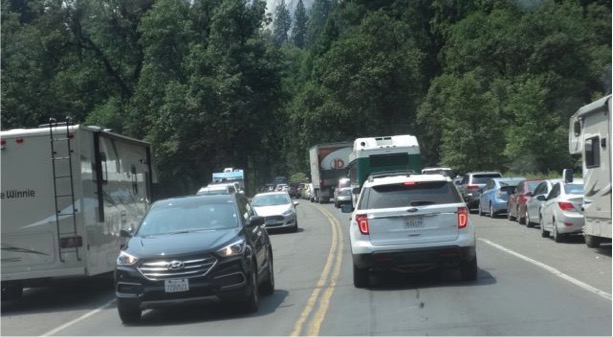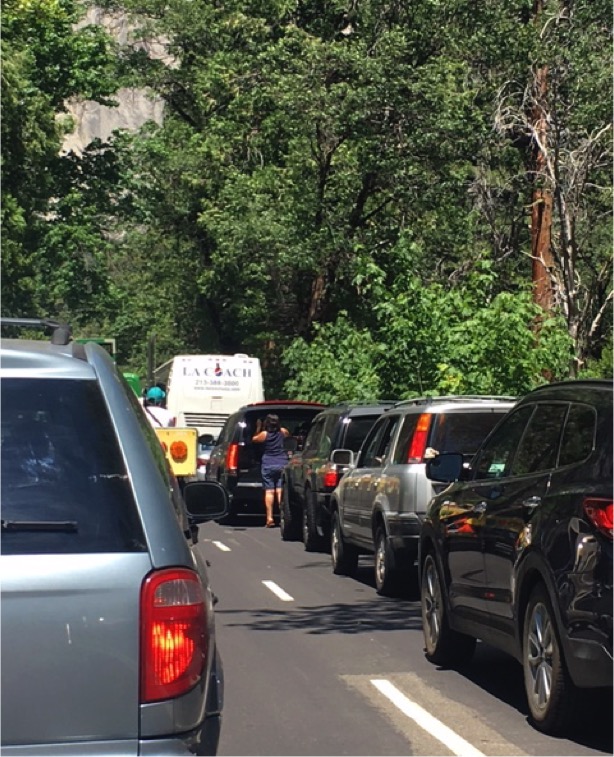For many families who traveled to Yosemite this summer, the experience was beyond frustrating. On busy weekends and many weekdays when wildfire smoke didn’t discourage visitors, drivers heading into Yosemite Valley got caught in massive traffic jams. For literally two or three hours, vehicles inched slowly forward in short spurts in between long waits with no movement. As drivers reached the cross-over road – halfway into Yosemite Valley – Park employees waved vehicles away from their destination, turning them back out of the Valley towards Park exits.
The number of vehicles far surpassed available parking spaces in the east end of Yosemite Valley. There were often no places to pull over, to use desperately needed restrooms, or (for vehicles turned back at the crossover) to even view Yosemite Falls or other sites. The traffic jams produced concentrated vehicle emissions. Frustrated drivers parked half blocking traffic lanes. A treasured visit to one of the world’s most iconic natural cathedrals ended up as textbook example of allowing visitor use far beyond capacity.

(Cars headed into Yosemite Valley are at a standstill in both photos)

Even for visitors lucky enough to find a place to park, crowded conditions produced stress. Park employees contacted CSERC to point out that shuttle bus lines often required waits of more than an hour. Some frustated customers cursed or theatened bus drivers. Key destinations were swarmed as visitor use levels at times exceeded daily use limits set by the Park’s Merced River Plan mandates.
CSERC’s director wrote two guest opinions for the Modesto Bee that gathered lots of supportive feedback from frustrated Yosemite visitors. Top Yosemite Park officials openly acknowledged that traffic gridlock was causing “unacceptable” visitor experiences, and that solutions need to be found.
Retired Park employees also reached out to CSERC to emphasize that Yosemite Valley simply cannot handle the spiraling visitor use levels that have skyrocketed in recent years. Like CSERC, they shared the need for the Park Service to convene Yosemite stakeholder discussions to formulate alternative options for new management direction that can keep Yosemite Valley from being loved to death by overcrowding and too many vehicles.

